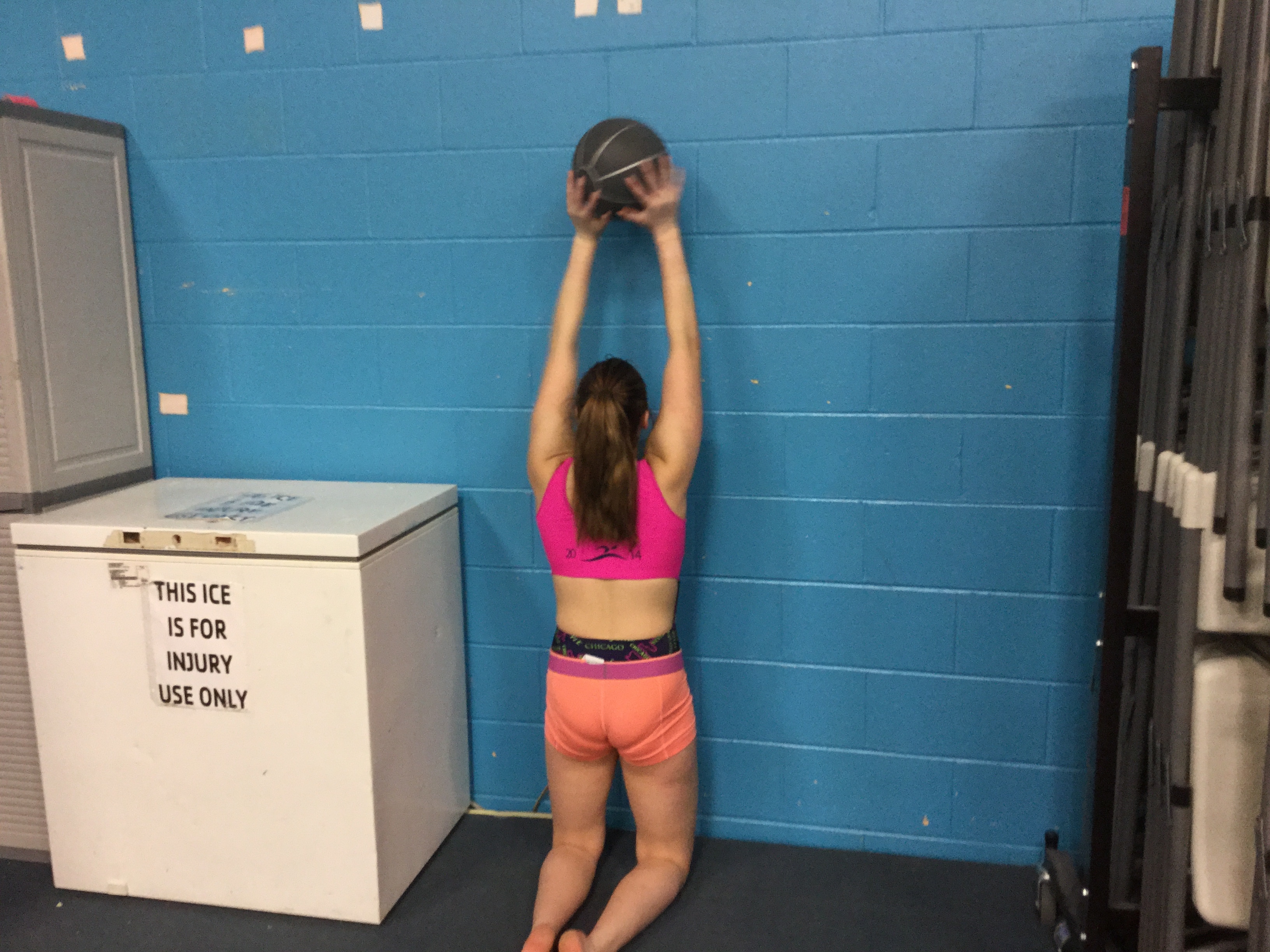Rehab Tips For Clinicians To Treat Gymnasts with Extension Based LBP – Part 4: Advanced Phase
Over a few different posts in the last month, I have been offering my thoughts behind the rehab progression of a gymnast with extension based low back pain. In Part 1 I first covered the acute phase, then in Part 2 the subacute phase, then in Part 3 the intermediate phase. Once through these stages, the gymnast is usually around the 3 month mark with no pain. They are usually ready to begin much higher level core strength/power training, and also should be progressed with their low threshold loading demand and endurance/fatigue resilience abilities. In my mind, this is one of the most crucial stages to make sure we get the gymnast back to a level above what they were previously so they can begin the return to sport demands of high force skills.
The most important part here is that the gymnast should have regained full spinal motion unloaded in the basic movement patterns of flexion, extension, rotation, and side gliding. Second, they also should have corrected any mobility or motor control/strength issues above in the thoracic and shoulder region or below in the hip region. Third, by this point they should automatically know how to globally extend in a manner that spares their lumbar spine from hinging overload, as this will be key in returning to back bending skills.
The drills I will offer below I use not only for advanced rehabilitation, but are also all part of my strength and conditioning program for the gymnasts on our team. They all serve the same overlapping purpose along the spectrum of athlete development. If you are trained in proper progressions start with basic patterns then move to unloaded. I would suggest those not familiar with this seek out a good strength coach to learn from. I personally have great strength coaches I constantly ask questions, and also read from lots of this field of literature to continue to learn more. With that said, here are some higher level drills I do in the clinic before I ever re-introduce gymnastics skills.
1. Tall Kneeling Reactive and Eccentric Med Ball Tosses – This is one of my favorite exercise, and in my mind is crucial to do with gymnasts returning from a back injury. For one, it transfers all the concepts of high threshold bracing locally at the spine with the issues that should have been corrected above/below in the global extension pattern early in rehabilitation. Also, I think it has huge gymnastics carry over for shape changing, and added an important reactive/eccentric-concentric coupling component. In theory, I think this can help to develop coordinative variability within the extension pattern, but by varying the throws/angles helps create elemental variability the gymnast will need to handle inevitable errors in gymnastics skill training.
2. Proper Deadlifting, KB Swings for Posterior Chain and Anti Extension – Building the dynamic stability component above is important, but at some point we need to load these athletes and help increase the strength in the hips, core, and shoulders. This allows them to solidify the range of motion gains they have made, but also increase their strength and power to help return them above their previous baseline of injury. Proper bilateral/unilateral deadlifting and squatting, KB swings, and hip thrusters are usually my go to’s. Although many people don’t agree with me on this, I think the addition of some proper/well coached barbell work also can go a long way here to return the athlete to above baseline strength and power levels. I can’t stress enough, you must find a good coach and learn proper technique.
3. Rotational and Sagittal Med Ball Work – Just like kettlbell swings, medball slams are one of my favorite ways to integrate the entire kinetic chain into higher threshold power seen in gymnastics. Creating real time force expression and maintaining quality of movement in the face of fatigue is very important for gymnasts that undergo long training hours. Rebuilding their energy system capacity and fatigue resilience goes a long way, especially as I mentioned breathing strategies tying into core control performance under load.
4. Loaded Carries and Sled Push/Pull: – Similar to above, loaded carries and sled pushing/pulling are a great way to tie in all components of reactive control, loaded strength, and the ability for the core to tolerate compression/unilateral load. There are tons of different carrying variations that target different areas or challenge the athlete in different vectors. Suitcase carries, overhead carries, front racked carries and sled pull/pushes are some of my favorites.
5. Crawling is Progressed To Wall Walk Ups and Fall Outs/EZ Sliders – Continuing to reintegrate the upper body patterns is important, so by this time I try to add in more challenging anti-extension core work, dynamic handstand drills, and global gymnastics drills. This helps re-ignite their technique needed they haven’t used in a while, but also aids in creating a reconditioning effect specific to gymnastics skills.
6. Proper Jumping and Landing Technique – Not only are extension skills a huge issue in relation to lower back pain, landing improperly also can subject the gymnasts spine to extraordinary forces. If the gymnast has poor limbo pelvic control, or is not utilizing proper hip hinging squat deceleration, they can very easily land overextended and stress the previously injured spinal structures. Take the time to explain and correct landing mechanics, as this happens thousands of times per month in gymnastics and must be a mastered, protected position. Teach them to land feet hip width (no deduction as long as they can touch their heels after), maintain a relatively straight toe-knee-hip-shoulder line, and utilize a hip hinging squat pattern.
At this point I also am usually allowing the gymnast back into some basics and strength/more intense energy system reconditioning. They can be in the gym participating in warm ups, technical drills, and strength within their symptom and restriction levels. This transition and bridging effect in my mind is crucial, and personally I feel not working through this stage properly leads to lots of re-injury rates upon return to sport. In the last post I will go over some return to sport and maintenance concepts. Take care,
Dave Tilley, DPT, SCS



